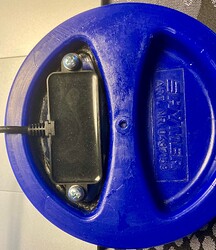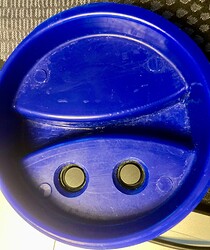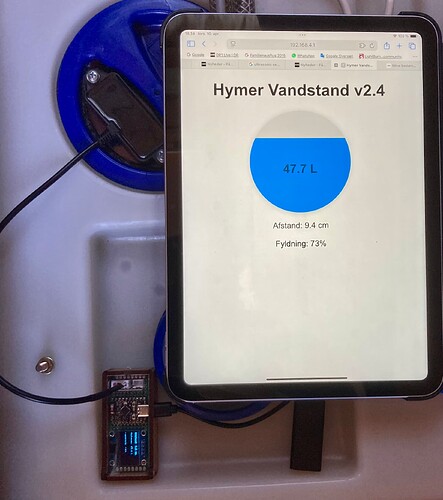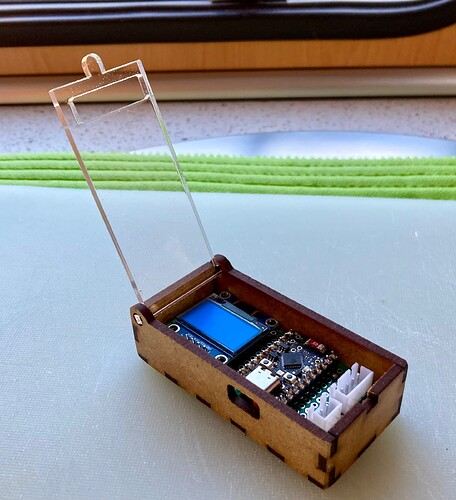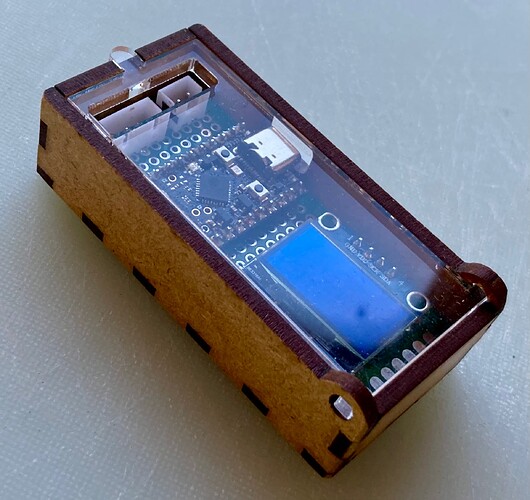This is what I wrote to Mike,
I sent it as a PM because I figured no one else would be interested in such a long description…, but here it is.
Thanks, but besides the fact that it looks technical and the box I made in LB is cute, it’s actually pretty low-tech  .
.
In most RVs there is a water level gauge that only indicates in 3-4 steps and after a few years the 4 pin system only shows full or empty and this is not accurate either 
You can buy professional solutions that can even be integrated into the RV/ship’s bus-controlled electrical system, but it has a proud price.
“My” solution is far from optimal and has too many components.
If I want to make it today, I will make it with the same sensor, but with an ESP32 C3 or C6, they have a built-in small display and Li-Po charger on board, so the only thing missing is a battery…For about 30 to $ 35 US you can build the same, just smaller and more professional.
The program is not complicated, in fact I can barely program but get a lot of help from DeepSeek. I’m sure the other AI solutions can help just as well and help with writing the little program.
I’ve programmed the controller so that it has an AP, I select it on my phone and enter a fixed IP address. On it there is a very simple graphic display of the water level and there is also the possibility of fine adjustment/compensation.
In the program there is a part that converts the measured height from the ultrasonic sensor to a volume value in liters.
It can also be done over BT, but I couldn’t figure out how to make an interface for my iphone…, for Android systems it’s easy.
I’ve had all the parts lying around here in my workshop, so I used them to test and play with, it’s a bit clunky but works fine and I’ve had a good time and it was fun.
In my next version I’ll also use something like deepsleep, i.e. the system goes into sleep until “I want to know how much water I have”. The battery should last up to several weeks until it needs to be charged directly via USB-C.
In 14 days I will have my RV back home, it is in winter storage right now, then I will install my system and calibrate it. Then I will test how stable and precise it is. But, with what I have already tested, it works as expected.
You are welcome to write if I can help you further, but remember, I am only an amateur 
Greetings Bernd
![]()
![]()


